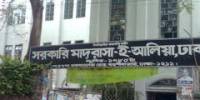When general education system failed to fulfill the target of lancers knowledge able persons thought for technical education. General Education is divided into there parts. As like as humanities. Science and commerce. But after taking of finishing student life learners are failed to fulfill their target. Their working field is very limited. So the number of unemployed are increasing day by day. And poverty reduction is a burring question for the government now-a-days so, new generation are too much fanatic to a quire technical education for survivable in the world. The popularity is increasing day – by-day for technical education. Govt. has taken steps to make the familiar of technical education. Govt. set up many govt. and non govt. institution in secondary and Higher secondary level. So, it is a common phenomenon in developing countries.
Introduction
The vision for 2020. The key aim by 2020 is to establish much closer linkage between skill training and job markets. By 2020 Bangladesh will have a much greater diversity of provision and targets of skill training. The Impact of TVET on poverty alleviation will have been increased though greatly expanded public financing of TVET for disadvantaged groups, much of it for income generation in the informal sector. Major reforms will also have been achieved in the delivery of TVET. For the most part, publicity financed TVET will be delivered though cost sharing arrangements with non-governmental institutions and employers. Local management will have replaced central management of the remaining publicity delivered TVET though decentralized authority to managers of public training institutions. Instead of providing training the central government will concentrate on the functions and activities not only easily done by non government providers, namely development of information systems, policies standards, curricula teaching materials and instructors training. Non public resources world be mobilized though partial cost recovery form beneficiaries and by establishment of financial partnerships with enterpriser.
Objective
The Objectives of technical / vocational education are as follows
a. To attain go percent literacy rate by the year 2020 in order to achieve percent with in 10 years.
b. To enlarge and upgrade the base of technical/vocational education and training most job oriented through constant and appropriate linkages with job market, both within and outside the country to turn knowledge into action in agriculture and industry and in other fields of production.
c. To ensure optimum use of existing educational facilities at secondary level.
d. To improve management of educational institutions through involvement of local bodies
e. To expand specialized/professional education and training in all relevant fields.
f. To review the system of public examinations conducted by the boa4rds at secondary level.
Background of Technical Education
In past division of India sub-continent when unemployment and under unemployment especially among the educational has become a common phenomenon in the developing countries in 1954 A technical Board was consisted for technical education Management. 1960 Directorate of technical education was established. In 1967 Technical educational Board was established. At present under the board 333 institutions and in 46 subjects certificate are given. Only a few students were studied on technical education and donation logistic support was so poor. People has no consciousness about the branch. In order to develop skilled technical education TVET has several advantages in can build on the attain this vision. Through the implementation of vocation education TVET
Programme, The directorate of technical education implemented 13 projects during the fourth plan. Only a poor amount of budget money was spent as like ask 164 cores. But at present it is enlarged Tk. 530 cores.
Education Circle
In Bangladesh the educational systems are as follows :
1. Primary
2. Secondary
a) Schools
b) Madrashas
3. Higher Secondary
4. Higher Education
A feature of Technical Educational Institution
In the post-period of Independence of Bangladesh Government has taken many initiatives to develop technical education. Bangladesh government set up a large number 1562 (Public-157, Private-1405) Technical Institutions.
Training Institutions In Bangladesh
There are several good quality public training institutions, including some TTCs under the ministry of Labor, and Rurual Youth. Several TTCs and VTIs have become more flexible and VTIs have become more flexible in their non governmental institutions. The technical educational institutions . The technical education Board is a small relatively effective organization for curricula, teaching materials and trades tests. VTI/TTC and UCEP, TVET BTEB/DTE Institutions CIDA/UNDP/IDA are also giving training to be skilled in technical teaching and ITC. Libraries are increasing day by day. Twenty political libtitutions are in under constructions among 5 are for women.
UCEP is also take a vital role increasing technical education
Technical Education in Secondary Level in Bangladesh
Various courses are given in the secondary level. It is called in our country vocational training. There are many subjects in secondary level as like as –
1. Trade
2. Engineering
3. Monotechnics
4. Agriculture
5. Commerce
6. Management
7. Computer
8. Dressmaking
9. Food Processing
10. Textile
11. Architecture
12. Electrical
13. Electronics
14. Mechanical
15. Power
16. Printing & Graphics etc.
Teachers 2560 There are 38622 students in secondary level including all subjects. After finishing the secondary level they get admission in Higher secondary level. If they want to take higher education in TU.
Budgeting system technical education in Secondary level :
There were many plans to reduce illiteracy. A great allocation was for technical education. Non-formal or mass education allocation was Tk. 1; 8235.70 million while 1000.50 million only could be provided though ADPS. Four projects were undertaken, of which two were completed and one was dropped. For technical education allotting Tk. only 1050.20 million ADP 123251 No large scale expansion programs at the secondary level. The enrollment at the secondary level increasing day by day. And technical education is a popular media now-a-days.
Evolution of the Systems of TVET
Entrance is reason logy competitive at all levels of formal skill training well-developed exit standards exit i, e, develops and managed.
The Technical education Board (TEB) is small, self supporting and a relatively effective organization for developing curricula and trade tests.
Good models exit for skill training by non-government institutions including both UCEP and a similar but cheaper model, suravi.
TTCs and VTIs have become more flexible in their no – regular programs be offering short terms training programs on a cost recovery basis in the afternoon and evenings to those who have completed their formal schooling.
Several comparatively good quality public training institutions exits including some of the TTCs under the ministry of Labor and manpower, the surveyor’s training institute under the ministry of education and some of the rural training caters of the ministry of Youth.
Impact of technical education in Bangladesh
• It is very technical and practical.
• About 60% students get. The job after finishing technical education.
• Technical cadres get change in 21 trades.
• Learning technical education 10% female students get job opportunities.
• After finishing General secondary education dont get the job but after finishing secondary technical level a student can get any working field.
• To raise productivity of labor though skill development and up grading of technology technical education helping too much.
• It also help to ensure access of women in vocational training and employment.
• Graduations are feeling interest to send their child for technical educational institute.
• Only 10% students can get change to get admission in polytechnic institutions but about 40% students can get chance in vocational group.
Plans and policies taken by Govt.
In view of the fact that the technological base in too weak at present to produce sufficient technically trained manpower, first, second, third, fourth, and fifth plan calls for expansion of capacity and diversifying of course offerings in line with emerging technologies. The main objectives of these plans are –
• To increase the present enrollment capacity of technical and vocational institutions form 3.3 percent of the student population at the secondary level to around 20 percent by the year 2020.
• to diversity technical and vocational education to meet man power needs in areas of emerging instrumentation.
• To strengthen the practical training basis of technical educational.
• To encourage private involvement and initiatives in delivery of IVET programs.
• To create an adequate data base for research, labor market analysis and policy formation in TVET.
Impotents problems in TVET
Lack of linkages to the Job market
The main problem with formal and non formal TVET is lack of linkages to employees and the job market. Employers complain that training programs do not produce the skills very require. No incentives are given to mangers or instructors to consult with employers. More over, the rigid, centralized training limits the possibilities of capitalizing on local responsibilities and initiatives.
Lack of Impact on poverty reduction :
The second issue is lack of diversification in training clientele TVET is almost exclusively geared to in school male youth in grades 9-10 as part of SSC Vocational Underprivileged youth outside the school systems, especially girls, do not have access though the TVET system for the skills they need to help them raise incomes in the informal sector.
Ineffectiveness of training support and delivery
In contrast with relatively weak performance of govt. financed and operated institution the non-govtal sector has demonstrated albeit on a very small scale- The capacity to develop local needs based curriculum customized to the experiences of trainees and has achieved strong employment rates for graduates.
Under financing
TVET is expensive but costs the beneficiaries students and enterprises virtually and subsidizing their accommodations. At the same time equipment and consumable supplies are chronically underfinanced in most public institutions. The training establishment 100ks to the central government to solve this problem, but the government lacks the funds. External financing is seen by some as an alternative, but a one-shot injection would not sustainable.
Hindrance of Technical educations in secondary level.
Teaching style is not scientific or not dynamic form which student can easily learn.
It has not a statutory body and has not so much smooth plans.
Vocational educational Boards are not available in our country.
In secondary level vocational learners have to finish about four semesters during tow years only. Which is not acceptable and students have to make straggle.
Lack of quality trained teachers.
Lack of technical teachers training institution.
Lack of proper teaching.
Lack of equipment, books and supplies for students.
Lack of professional skills of teachers.
Weak community involvement and lack of awareness and interest of parents.
Shortage of teachers and teacher absenteeism
Shortage of classroom and over crowding.
Recommendations
A study on technical education in secondary level is a nice title and a burning question of the day. If any country wants to develop they must have to take necessary steps like European, Australian and Asian developed countries. For this matter govt. should take necessary steps should be taken. If we feel it and them job market as a hole our national economy will be increased. Mention following recommendations as like as
• The capacity of the board should be expanded to include a broader range of quality control activates in school accreditation examinations, certification, research and curriculum development, but should not expand beyond its well defined scope of services.
• Decentralize some authority to local schools that have the willingness and capacity to demonstrate more creative and effective approaches to VTE service to delivery.
• Require each VYE school to have an active industry advisory committee.
• Establish a task force to investigate options for improved employment opportunities in VTE.
• Provide financial support and incentives for expansion of NFTVE on and experimental basis.
• Invest in intrastrucre to provide girls and women with increased access to reformed VTE, including a model training institution.
• Government should institute measures to ensure and finance high levels of maintenance and security.
• Consolidate institutions into ones of larger size to concentrate resources and achieve economies of scale.
• Establish a high-level national advisory committee
• Establish recognition and accreditation procedures for private training institutions.
• Establish sheltered workshops or business in curators
• Add mobile training for rural areas
• Lower entry requirements in selected trades, shorten training programs
• Introduce sheltered workshop schemes
Conclusion
Form the analyzing of the term paper may recommend that secondary technical education is very much necessary. But technical education is very much needed all the sector of our countries educational system. Otherwise learners may be drop out form the institution. For the betterment to develop our technical educational system yearly plan and settle more institution, training institutions, technical support, financial equip mental help master plan.
















